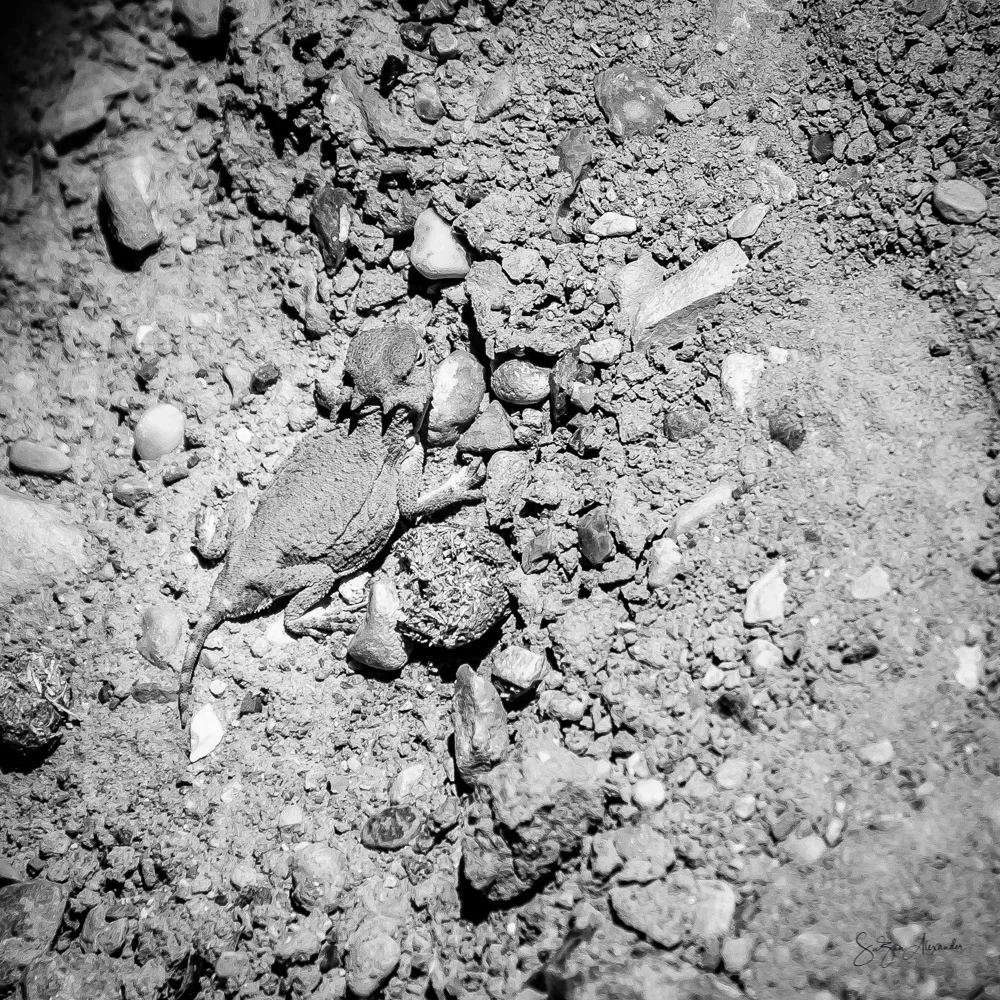WHERE IN THE WORLD IS THE REPTILE?
I realize this is not my usual blog post, but this is a special sighting I want to share with you. On a recent trip to far west Texas, there was a little critter who blended in with the soil and rocks so well that only his/her movement gave him/her away. This guy is classified as a reptile, and he/she was tiny - maybe the size of a quarter excluding the tail. Do you want to take a look and maybe make a guess? Well, here you go:
Digital Photography © 2018 SuZan Alexander
What’s that? You can’t see the reptile? Well, that’s part of its defense. Trust me, I tried to enhance the image by cropping, etc. to make our subject a little more prominent, but I’ll put a red circle around it to help you out.
Texas Horned Lizard - Digital Photography © 2018 SuZan Alexander
If you spent any time in Texas, you will recognize this as a baby “Texas Horned Lizard”, “horny toad”, “horned toad”, or some variation thereof. They are so named due to the crown of horns on their head. The horns may be part of their defenses, as well as their ability to “inflate” themselves in appearance. But, I think we can all agree, their real defense is the ability to shoot a stream of blood from their eyes/eyelids/tear ducts when they are really angry or threatened. I know as a child that was their “claim to fame” as far as I was concerned.
In true Texas legend, who can forget the story of Old Rip? Old Rip was the horned lizard placed in the time capsule in the cornerstone of the Eastland County courthouse. When the time capsule was opened some thirty years later, the horned lizard was alive. Yeah, I don’t think it’s true, but it is a good story, and that’s why it’s called a legend.
But, in all seriousness, I have not seen a Texas Horned Lizard since I was a child. (Sorry TCU. No offense intended since this is your mascot and all, but I mean the real, living, breathing sort of horned lizard.) The fact that I have not seen these reptiles in a while may be due to their decline in population which has landed them on the Texas “threatened” list in spite of a 1967 law banning the collection, export, and sale of horned lizards.
So, go forth tiny reptile. You are a little ray of hope and nostalgia all in one small package; but, maybe stay away from Eastland County - just in case.
Texas Horned Lizard, Digital Photography 2018 SuZan Alexander
Sources:
Texas Parks and Wildlife: Species
Texas Parks and Wildlife: Facts
Texas Monthly (The article includes a little bit about Texas’s most famous reptile - Old Rip, of course.)



